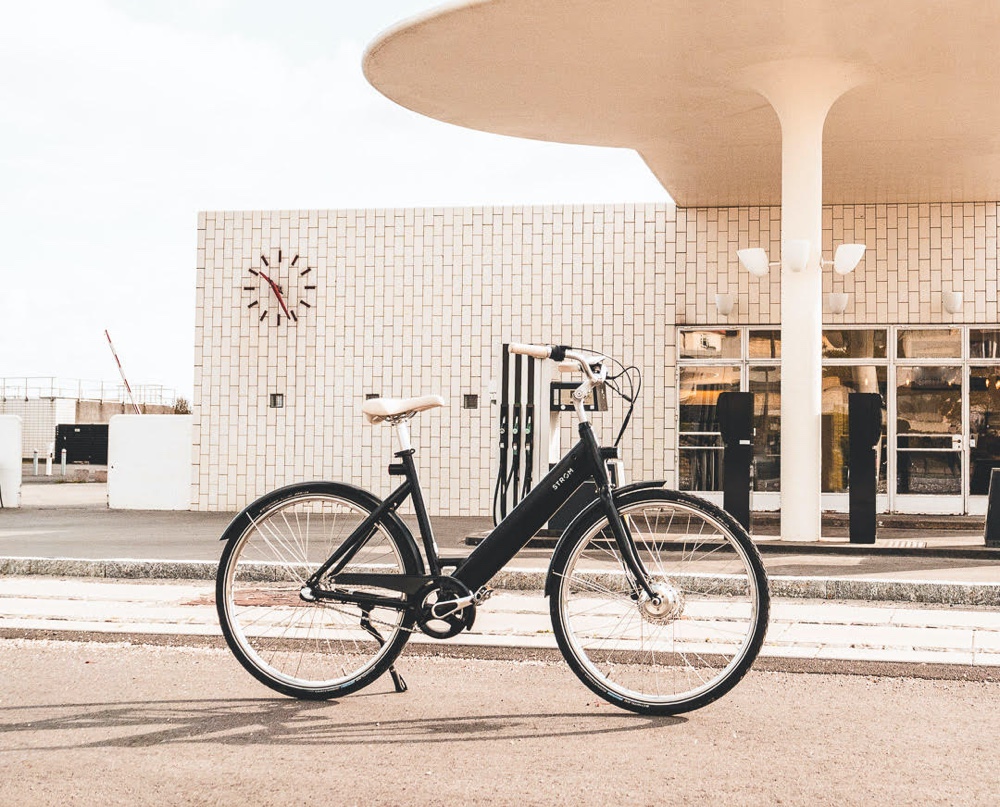Strøm Bikes is an innovative e-bike company based in Copenhagen, on a mission to make urban commuting more sustainable and convenient. At Strøm, they believe that e-bikes are an essential part of the transition to a green urban transportation system.
Today, traffic jams, smoke and extensive pollution are just some of the challenges the world’s largest cities are trying to solve. In many places air-pollution has reached critical stages, and in many cities cars are driven by one person commuting to/from work. Our fossil fuelled transportation system currently emits 24% of global CO2 emissions, out of which 72% comes from road vehicles. It’s also predicted that by 2050 urban populations will reach 6.5 billion. This puts increasing pressure on handling resources in a more sustainable way for our societies.
Knowing that by embracing automation, electrification and ride sharing transport emissions could be cut by 80%, Strøm is at the forefront of ensuring future electric mobility.
We spoke with Strøm Bikes’ CEO & co-founder Nichlas Lloyd and Project Manager Hjalte Betak to learn more about the concept and the mission behind the company.

How has the e-bike industry changed in the past few years?
N: The industry has been growing faster in the past few years. I recently looked at some data and statistics by Bike EU, a business portal for bike producers in Europe, predicting that by 2027 there will be more e-bikes than regular bikes. It’s a very exciting market that is rapidly growing here in Europe. The same seems to be happening right now in America; due to the pandemic, people are more afraid of public transportation and decide to buy e-bikes. The pandemic has also brought more financial instability to families, so many families have preferred to invest in a cheaper means of transport like an e-bike, rather than expensive cars.
Do you think there are other reasons why e-bikes are becoming more popular?
N: If I had to sell e-bikes using one word, I’d say “flexibility”. E-bikes are a perfectly flexible solution; people can both exercise and go to work without breaking a sweat. In fact, the amount of assistance you receive while cycling can be calibrated and adapted to every need.
E-bikes represent the perfect way to commute in inner cities. Only now people are starting to understand that e-bikes are a more sustainable and convenient means of transport that doesn’t cause traffic congestion and doesn’t come with the hassle of always having to find a designated parking spot. E-bikes also solve environmental issues; by not introducing further co2 in the atmosphere, they don’t worsen the quality of the air.

What is the mission and vision behind Strøm Bikes?
N: The mission behind Strøm is to make the electric bike the preferred means of transportation for urban commuting. To do this we want to make a bike that people don’t consider “just an electric bike”. It may sound funny, but people tend to associate electric bikes with something you use when you retire. Most people also imagine an electric bike as a regular bike with a huge battery installed on the back, which kind of makes you look like you’re going camping.
So, our mission is to create an electric bike with a sleek, minimalistic design in which every component is fully integrated — from lighting to batteries. When we started, we wanted to create a Scandinavian, minimalistic e-bike, without any frills: an e-bike that doesn’t seem electric but has the same functionalities of one.
What inspired you to create the Strøm bike?
N: I was surely inspired by Scandinavian minimalism, which I really love. I always look around to find inspiration in larger design companies here in Denmark. I like to look at Scandinavian furniture, in particular Arne Jacobsen, and observe how they round objects and smooth out every edge. B&O also makes beautiful products. Another source of inspiration, for me, is aeroplanes, which have an aerodynamic shape and no sharp edges.
Being Danish myself, I feel that I am part of a Scandinavian design legacy, which I want to bring into my design. When I find a feature, a shape, or an element I like, I try to apply it to my products — always maintaining consistency and an aerodynamic silhouette.

What makes Strøm Bikes unique?
N: We at Strøm design the majority of the components — down to the wire. Most of our customers probably don’t even care too much about these small details, but we do; for example, we make our own custom screw wires with our logo on. We design and produce about 70% of the components, such as the electric system, the frames, the forks, the cranksets, the lights, etc. What we outsource is gears from Shimano, brakes from Tektro, tyres from Schwalbe, and pieces like rims and spokes.
Another aspect that makes Strøm Bikes unique is that the critical components of our bikes are designed for self-assembly. The user is able to replace bike components autonomously without having to rely on the mechanic’s schedule or having to pay for the repair service. All the critical components, from displays and batteries to smaller pieces, are easily replaceable, allowing any user to replace a piece in just a few minutes, if not seconds. For instance, the battery only takes 4 seconds to be replaced, while the most complex piece takes 15 minutes. To ensure a correct and safe replacement, we provide instructions and guidelines too. We also have a strong online presence; our repair and maintenance centre is located on our website.
How important is sustainability for you?
H: As a young company, on a mission to make inner-city commuting more sustainable and convenient, thinking about sustainability is fundamental. We would like our design process to be completely sustainable from the start, but this is not entirely possible yet. So, what we are doing is to build a process that is becoming more and more sustainable as we work, while focusing on the areas where we can make an immediate environmental impact: replacing the cars one electric bike at a time. At the same time, economic and social sustainability for us means making electric bikes accessible to a lot more people by offering our bikes at reasonable prices.
I would love to be able to say one day, “we are 100% sustainable,” but I think no company would state that without being one of the largest brands in the world with huge control and financial resources. For us it’s a process of constantly moving in the right direction. Our business model, which we have named “Direct To You”, consists of direct trade from us — the manufacturer — to the consumer. This allows us to cut out a long range of traditional middlemen, offering a high quality product at a lower price, and in a more sustainable way. Eliminating all intermediaries allows us, and consequently our customers, to avoid extra costs and transportation-related co2 emissions. Everything from design, development, manufacturing, shipping to sales is done in-house, which allows us to keep a smaller stock and a smaller warehouse. The fact that our repair and maintenance centre is online also contributes to reducing purposeless circulation of components and pieces.

What can digital designers learn from you and your product?
N: When I started designing, I did it just for myself. So, I think digital designers, as any other type of designer, should do something they believe in, like I did. Take chances, be out there! I lived in Asia for about three years, and before I went there, I didn’t really know what I was looking for. I found that mixing my experiences with my heritage — my Scandinavian heritage focused on minimalism — helped me design interesting things.
What is the next thing you’re going to work on?
N: We can’t fully reveal, but I can say we’re working to make our e-bikes smarter in many different ways. IoT is surely something interesting for us to look at, but it’s also something that requires a lot of capital, unless we involve third parties, which we usually don’t do.










